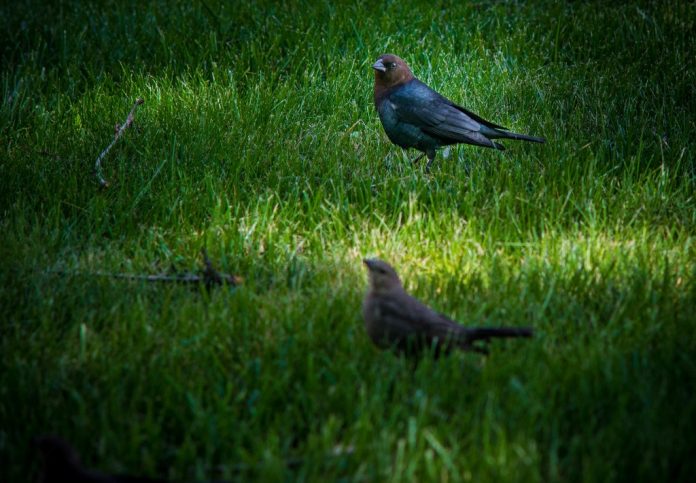Bird call: Brown-headed cowbirds lay their eggs in the nests of other birds. MARIA POUCHNIKOVA / TIMES PHOTO
What’s that bird with a shiny black body and neck and head the color of dung?
It’s a brown-headed cowbird. It’s not one that Northeast residents are likely to see at their backyard feeders, or maybe even recognize when they do see them in open fields or on the edges of woods or parks.
The brown-headed cowbird is about the size of the easily recognizable European starling, but its black body feathers are not speckled like the starling’s, even though those feathers have something of the starling’s iridescence.
There are plenty of them around, and their population in Pennsylvania is pretty stable, said Diane Smith, director of education with the Bucks County Audubon Society.
It’s how the cowbird maintains its numbers that’s different.
It’s a parasite. Female cowbirds lay their speckled blue eggs in the nests of other birds and let those host parents raise the cowbird’s young.
“It’s a nasty bird overall,” said Mary Penney, the society’s spokeswoman.
It uses the nests of hundreds of different species, Smith said, but some female cowbirds seem to specialize in imposing on their individual favorites. “They specialize in particular kinds of nests,” she said.
Some host birds resent the stranger’s eggs enough to push them out of their nests, she said.
Cowbirds can be seen on farms, often following livestock so they can pick off the insects that stirred up when the animals move through fields, Smith said. It’s thought that, for thousands of years, they used to follow North America’s roaming herds of bison for the same reason.
Sally McCabe, Pennsylvania Horticultural Society project manager, said she’s seen brown-headed cowbirds in the city and believes there are just as many of them now as there were 25 years ago. She theorized that people are probably more aware of them now.
They don’t seem to be a problem for city gardeners because they eat seeds and insects on the ground and generally stay away from feeders. They don’t eat young plant leaves, which is something sparrows do, she said. ••





